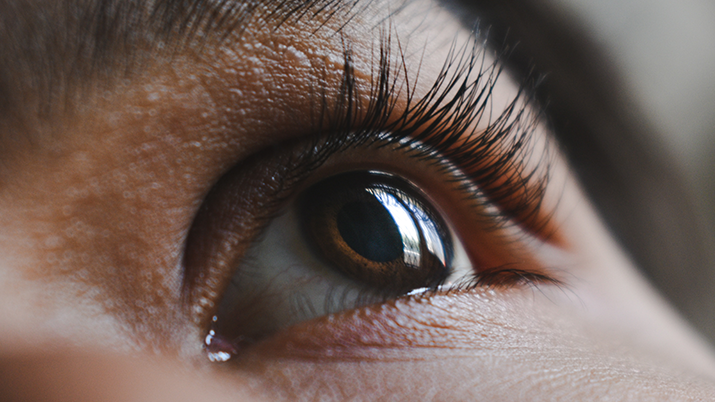In addition to being an indicator of good health and a means of protection, eyelash length can also signal attractiveness.
Contrary to public belief, new research suggests that too long eyelashes are just as unattractive as too short lashes, following what the researchers call an ‘inverted-U function’. The optimal lash length for women is one-fourth to one-third of the eye length, while for men it is about one-fifth of the eye length.
Dr. Farid Pazhoohi, a Killiam Postdoctoral Fellow in the Brain, Attention, and Reality Lab is the lead author of a new study, The Effect of Eyelash Length on Attractiveness: A Previously Uninvestigated Indicator of Beauty published in Evolutionary Behavioral Sciences. Using a 3D rendering software, Pazhoohi generated female and male faces with varying eyelash lengths. He then had participants rank photos of female and male faces by attractiveness, to investigate the perceived attractiveness of eyelash length.
Dr. Pazhoohi joins us for a Q&A about these new findings and their significance in our modern society.
Can you tell us about this new research?
Since antiquity, humans have engaged in eyelash-enhancing practices and modified their eyelashes as a tool to manipulate their attractiveness. While it is considered by most that longer eyelashes are considered more attractive, no systematic research has tested this assumption. In this study, we systematically investigated the influence of eyelash length on perceived attractiveness. Our results showed that the most attractive eyelash length is about one-third to one-fourth of the width of the eye.
What prompted you to study this?
One of the lines of my research is focused on the perception of attractiveness from an adaptive evolutionary perspective, and one of the highly researched aspect of attractiveness research is focused on facial attractiveness. However, while it seems intuitive that long lashes should be considered more attractive, no previous study has systematically tested such assumption or considered such facial feature as a research question.
How did the study work?
We asked a sample of 132 participants to rank a series of images of faces in order of attractiveness. Each participant was shown 11 images of the same face (either a male or a female face), which were identical except for the variation in eyelash to eye-width ratios. To test the effect of gender, some of the students only observed male faces and some of the students only observed and ranked the female faces.
“We hypothesized that like other indicators of attractiveness, eyelashes should serve as a window into a person’s underlying genetic quality, therefore we hypothesized and confirmed the preference for eyelash length follows an inverted-U function.”
How does eyelash length signal health and attractiveness?
From a health perspective, lengthening of eyelashes can be a response to allergies or immunodeficiency diseases, therefore long eyelashes can signal different congenitally and noncongenitally diseases. On the other hand, very short eyelashes, or loss of eyelashes, can be indicators of dermatological or nutritional disorders, or endocrine or systemic diseases.
From an evolutionary perspective, individuals are sensitive to cues of health and genetic quality in other people and consider such cues as more attractive. For example, we prefer sexual dimorphism (masculinity for men and femininity for women), averageness and symmetry in faces because such characteristics are indicators developmental history and underlying immunity, physiology and genetic quality.
Here we hypothesized that like other indicators of attractiveness, eyelashes should serve as a window into a person’s underlying genetic quality, therefore we hypothesized and confirmed the preference for eyelash length follows an inverted-U function.
What role does culture and gender play in eyelash length preference?
The participants ranked the most attractive eyelash length differently for male and female faces, suggesting the cultural gender norm plays a role. To be specific, participants preferred slightly longer eyelashes on women than men. Moreover, male faces were rated the least attractive when eyelashes were very long, while the least attractive female faces were those with very short or nonexistent eyelashes.
In other words, while our results suggested an optimum length at which eyelashes are perceived to be most attractive, this preference can be influenced by cultural gender norms. Therefore, we think the gender difference found in our sample, might slightly differ in the cultures where men’s eyelash-enhancing practices are more accepted.
“This is one of those research questions that is so great because it is so obviously interesting, but no one, until Farid, had thought to do it. We are looking forward to extending this work into a variety of different domains, ranging from the methodological (e.g., virtual reality) to the applied (e.g., cultural) considerations.”





